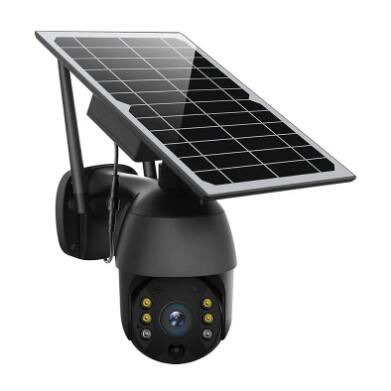Why 5G Solar Cameras are the Ultimate Solution for Remote Surveillance
2024-08-28
Introduction
In today’s fast-paced world, the need for effective and reliable security solutions has never been greater. For remote or off-grid locations, traditional surveillance systems often fall short due to the challenges of power supply and connectivity. Enter the 5G solar camera, a groundbreaking innovation that combines the latest in wireless communication with sustainable energy sources. In this blog, we will explore why 5G solar cameras are the ultimate solution for remote surveillance, focusing on their unique advantages and practical applications.
The Challenges of Remote Surveillance
Remote surveillance presents unique challenges that are not typically encountered in urban or well-connected areas. These challenges include:
1. Power Supply Issues:
- Remote locations often lack access to reliable power sources, making it difficult to maintain continuous surveillance with conventional cameras.
2. Connectivity Constraints:
- Traditional surveillance systems rely on wired or Wi-Fi connections, which may be unavailable or unstable in remote areas. This lack of connectivity can lead to delayed or lost footage, compromising security.
3. Difficult Terrain:
- Installing wired cameras in remote locations with difficult terrain can be both costly and time-consuming. The need for extensive infrastructure makes it impractical for many surveillance projects.
4. Environmental Factors:
- Remote locations are often exposed to harsh environmental conditions, such as extreme temperatures, rain, and dust, which can damage or degrade traditional surveillance equipment.
How 5G Solar Cameras Address These Challenges
1. Independent Power Supply:
- 5G solar cameras are equipped with solar panels that generate electricity from sunlight, eliminating the need for external power sources. This independent power supply ensures that the cameras can operate continuously, even in the most remote locations. Additionally, many 5G solar cameras come with built-in batteries that store excess energy, providing power during nighttime or cloudy conditions.
2. Seamless 5G Connectivity:
- The integration of 5G technology in these cameras provides seamless connectivity, even in areas with limited infrastructure. The high-speed data transmission capabilities of 5G networks enable real-time video streaming and remote access, ensuring that security teams can monitor remote locations without delays or interruptions.
3. Easy Installation:
- The wireless nature of 5G solar cameras makes installation straightforward and cost-effective. There’s no need for extensive wiring or infrastructure, allowing the cameras to be quickly deployed in challenging terrains or isolated areas. This ease of installation also means that the cameras can be relocated or adjusted as needed, providing flexibility in surveillance coverage.
4. Durability and Weather Resistance:
- 5G solar cameras are designed to withstand harsh environmental conditions, making them suitable for use in remote areas with extreme weather. These cameras are typically housed in rugged enclosures that protect the internal components from dust, moisture, and temperature fluctuations, ensuring long-term reliability.
Practical Applications of 5G Solar Cameras in Remote Surveillance
1. Wildlife Monitoring:
- Conservationists and researchers can use 5G solar cameras to monitor wildlife in remote areas without disturbing the natural habitat. These cameras provide valuable insights into animal behavior and population dynamics, aiding in conservation efforts.
2. Agricultural Surveillance:
- Farmers with large or remote properties can use 5G solar cameras to monitor crops and livestock. The cameras provide real-time data on the condition of fields, the presence of pests, and the health of animals, helping farmers make informed decisions.
3. Oil and Gas Pipelines:
- 5G solar cameras are ideal for monitoring long stretches of oil and gas pipelines that run through remote or inaccessible areas. The cameras can detect potential leaks, unauthorized access, or other anomalies, ensuring the safety and integrity of the infrastructure.
4. Border Security:
- Governments can deploy 5G solar cameras along remote borders to enhance security and prevent illegal crossings. The cameras provide real-time surveillance of vast and isolated areas, enabling quick responses to any security breaches.
5. Environmental Monitoring:
- 5G solar cameras can be used to monitor remote environmental sites, such as forests, mountains, and coastlines. These cameras help track changes in the environment, detect illegal activities like logging or poaching, and support disaster response efforts.
Future Trends: The Integration of AI and 5G
Solar Cameras
As technology continues to evolve, we can expect further advancements in 5G solar cameras. One promising trend is the integration of artificial intelligence (AI) with these cameras. AI-powered 5G solar cameras could offer advanced features such as facial recognition, object detection, and predictive analytics. This combination would enable more sophisticated and proactive security measures, particularly in remote or high-risk areas.
Conclusion
The 5G solar camera represents a significant leap forward in remote surveillance, offering a solution that overcomes the traditional challenges of power supply, connectivity, and durability. Whether it’s for wildlife monitoring, agricultural management, or border security, these cameras provide reliable and efficient surveillance in even the most isolated locations. As 5G networks expand and solar technology improves, the adoption of 5G solar cameras is set to grow, making them an essential tool for modern security and monitoring needs.



